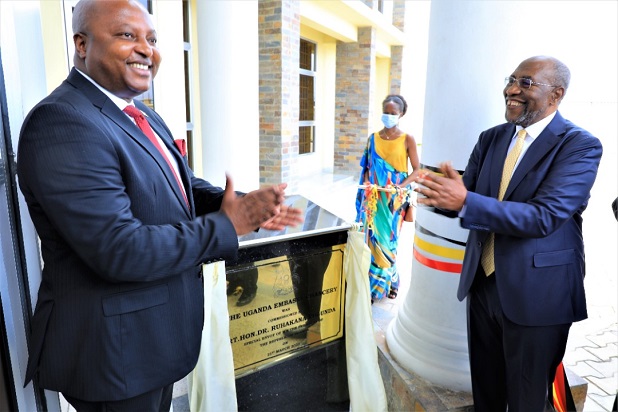EAC Trade, Finance and Investment ministers adopt basic requirement to trade under AfCFTA
The East African Community (EAC) member-countries have agreed on the list of goods on which the countries will remove tariffs when trading with the rest of the continent, under the African Continental Free Trade Area (AfCFTA) in 10 years.
The countries adopted the EAC Tariff Offer for Category A products amounting to 90.2 percent to be liberalized in 10 years after the start of trading under the AfCFTA.
According to the modalities of implementing the agreement, “Category A” products are those that account for at least 90 percent of the traded products, whose tariffs will be waived within a period of 10 years, for Least Developed Countries, and five years for Developing Countries.
For the EAC these are 5,129 tariff lines out of the total 5,688 lines. Negotiations within the EAC are ongoing on the other products or tariff lines.
“Category B” products, which are deemed sensitive to a country account for not more than 7 percent of the total products or tariff lines, and these tariffs will be removed within 13 years for LDCs and 10 years for Developing Countries.
The other, “Category C” or 3 percent of the total tariffs can be retained.
The EAC Ministers in charge of Trade, Industry, Finance, and Investments have directed the Secretariat to submit the EAC “Category A” Tariff Offer to the AfCFTA Secretariat in Accra, Ghana as soon as possible, for verification.
After approval, the EAC will then be ready to trade in these products under the agreement, with the other countries whose tariff lines have been verified too.
The EAC is now among the State Parties that have met the minimum requirements for Category A to start trading on a provisional basis under AfCFTA.
The EAC is negotiating the AfCFTA as a bloc (State Party), the reason Kenya, which is a Developing Country, will not be subjected to the different terms set for other developing countries.
The Extra-Ordinary Council of the ministers on Friday also directed the EAC Secretariat to convene an Experts meeting by 15th April 2022 to consider categories B and C of the EAC Tariff Offer.
The AfCFTA has so far verified 29 tariff offers to ensure that they meet the modalities and EAC’s inclusion will increase the number to 34.
South Sudan signed up to the AfCFTA agreement but is yet to ratify it, hence its exclusion for now.
A total of 54 out of the 55 African countries have so far signed up, with the exception being Eritrea, while at least 44 have ratified it by February 10, 2022.
The Agreement became effective in January 2021, with the aim of creating a market of 1.3 billion people and total GDP of 3.4 trillion dollars.
It is also aimed at making intra-Africa trade cheaper, which should increase the value of goods traded amongst the countries from the current 72 billion dollars or 16.6 percent of total African trade.
Only Oceania has a smaller intra-regional trade of 7 percent, while in Europe 68 percent, Asia 59 percent and America, 55.
Africa’s exports to the world are worth more than 422 billion USD. Kenya’s minister for EAC Affairs Kevit Desai, who also chaired the Extra-Ordinary meeting, told a media briefing that AfCFTA would give the Partner States access to an extended market of more than 900 million people, increase opportunities for trade, employment, industrialization, and economic prosperity.
“The expanded opportunities include manufactured products, value addition, regional value chains, agro-processing, motor vehicle assembly, pharmaceuticals, auto spares industries, and mineral processing among other areas,” said Dr. Desai.
On whether opening up the Ugandan market will not expose Uganda’s young industrial economy to competition from bigger economies, the Ministry of Trade, Industry, and Cooperatives say the tariff offers have been negotiated carefully to cater for this.
Christine-Rita Namusobya Abankwah from the Federation of Small and Medium Enterprises Uganda noted the need to sensitize Uganda’s business community further to make it ready for the African market.
“Having a good understanding of the African market is essential for Ugandan firms that want to be successful in exporting their products or services to Africa.”
According to her empowering SMEs also means that Ugandan exporters should determine the cost of making their product, the price, and who their target consumers in Africa are.
However, there is also a need to prepare their capacity to go continental, otherwise, they will be overwhelmed.
“If a Ugandan SME has never exported and can’t produce much volume, it may have more success by partnering with a Ugandan intermediary,” she says.
-URN





